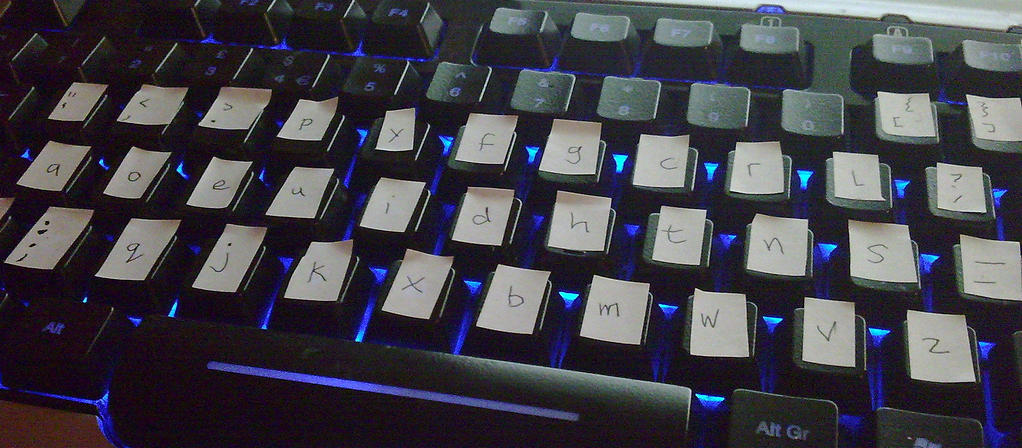The standard keyboard has the QWERTY layout, which has remained unchanged for the last 100 or more years. Strangely enough, this layout was designed to slow down typing speeds because with a more rational layout, the old mechanical keys would get stuck — so typing was deliberately made difficult, to prevent the keys from getting stuck. The mistake was discovered about a hundred years back, but nothing was done to rectify it.
Okay, so there was some justification for not changing things while manual typewriters still existed — after all, rectifying all existing typewriters would have been prohibitively expensive. But now, with typewriters obsolete, and with the ability to change the keyboard layout with a mouse-click, there is absolutely no valid reason not to change over.
The most common letter combination in the English language is “the”. In the QWERTY keyboard, none of these letters are on the home keys (that is, the 8 keys on the middle row where the fingers rest). The result of these awkward combinations is RSI (Repetitive Strain Injury), which is very common among people who do a lot of typing.
Enter the Dvorak keyboard layout. I will not give you its history; suffice to say that it is designed such that 70 per cent of the keys pressed are on the middle row, and one has to very rarely access the bottom row, which is the most difficult to type. No more RSI. Dvorak is ANSI standard, and hence available on all operating systems. On Linux, it is just a case of choosing the layout from Preferences –> Keyboard in GNOME.
So, is it easy to shift to the Dvorak layout? No. Experienced typists use muscle memory — the brain thinks and the fingers obey. In starting Dvorak, the brain freezes and the fingers freeze or press the wrong keys. Typing speeds drop dramatically.
A lot of people drop out after a few days. I am typing this in Dvorak, and my editor is getting very impatient! One piece of advice — do not rearrange the keys. Dvorak is to be used without looking at the keyboard — and you will suffer when you have to use someone else’s machine.
So what has this to do with FOSS? You would have noted that most people who drop out of Dvorak do so because they are not comfortable with it at the start. They are comfortable with being uncomfortable — so they go back to being uncomfortable. This is the mindset of the vast majority of people — they put up with all sorts of inconvenience because “they are used to it”.
The FOSS mindset, on the other hand, is to regularly break established myths, and make things more logical, more rational and more standardised. Of course, it is uncomfortable doing things in a different way, but think of the benefits in the long run!














































































“The most common letter combination in the English language is ‘the’. In the QWERTY keyboard, none of these letters are on the home keys (that is, the 8 keys on the middle row where the fingers rest).”
Erm, the letter ‘h’ is on the home row, in between the letters ‘g’ & ‘j’.
Oh, home keys, not home row. Damn, my bad.
“The FOSS mindset, on the other hand, is to regularly break established myths, and make things more logical, more rational and more standardised. Of course, it is uncomfortable doing things in a different way,”
Nice Article.
It makes so much sense that I actually tried it! However, I would really love to come across the Dvorak Keyboard in Kolkata Computer shops, imagining the keyboard out there is rather tough!
Once you get the hang of it you type dvorak when not looking at the keyboard and then when you look at it, your brain switches over to qwerty.